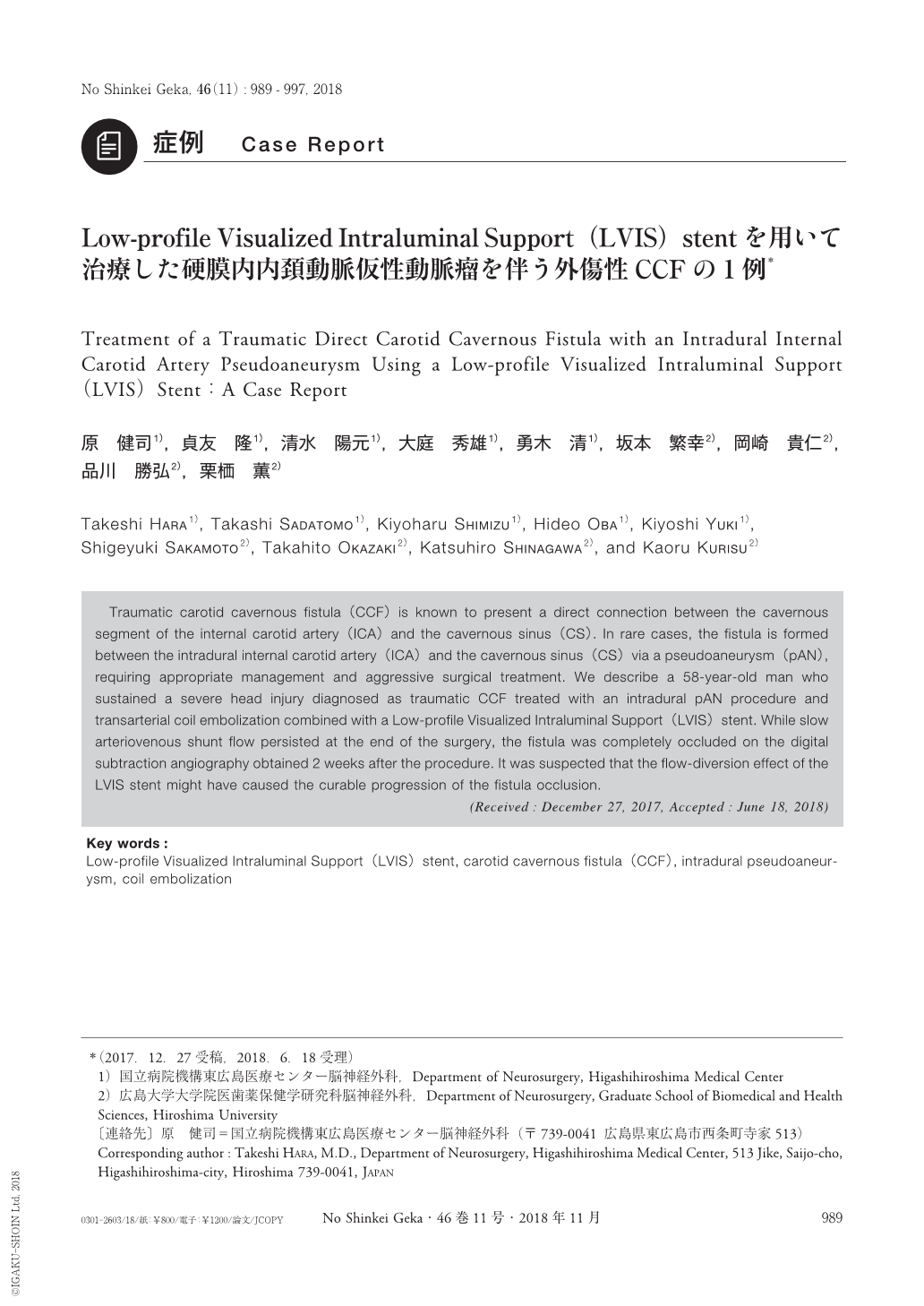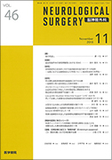Japanese
English
- 有料閲覧
- Abstract 文献概要
- 1ページ目 Look Inside
- 参考文献 Reference
Ⅰ.緒 言
頭部外傷に伴う内頚動脈-海綿静脈洞瘻(carotid-cavernous fistula:CCF)は稀に遭遇する疾患である.多くは海綿静脈洞(cavernous sinus:CS)を貫通する頭蓋内硬膜外内頚動脈(internal carotid artery:ICA)の損傷による直接的な動静脈シャントを形成することが原因となるが,ごく稀に硬膜内ICAが仮性動脈瘤を介してCSと瘻孔を形成することが報告されている.これは受傷後2〜3週間内に致死的な頭蓋内出血を来す可能性があり,迅速かつ適切な診断および治療が要求される.今回われわれは,重症頭部外傷で発症し,急速な増大傾向を示す硬膜内ICA仮性動脈瘤を伴う外傷性CCFに対して,Low-profile Visualized Intraluminal Support(LVIS)stentを併用したコイル塞栓術で治療した1例を経験したため報告する.
Traumatic carotid cavernous fistula(CCF)is known to present a direct connection between the cavernous segment of the internal carotid artery(ICA)and the cavernous sinus(CS). In rare cases, the fistula is formed between the intradural internal carotid artery(ICA)and the cavernous sinus(CS)via a pseudoaneurysm(pAN), requiring appropriate management and aggressive surgical treatment. We describe a 58-year-old man who sustained a severe head injury diagnosed as traumatic CCF treated with an intradural pAN procedure and transarterial coil embolization combined with a Low-profile Visualized Intraluminal Support(LVIS)stent. While slow arteriovenous shunt flow persisted at the end of the surgery, the fistula was completely occluded on the digital subtraction angiography obtained 2 weeks after the procedure. It was suspected that the flow-diversion effect of the LVIS stent might have caused the curable progression of the fistula occlusion.

Copyright © 2018, Igaku-Shoin Ltd. All rights reserved.


